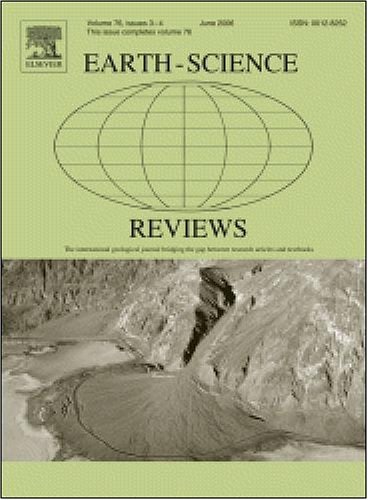青藏高原东北缘景观演变对前代河流的重组
IF 10
1区 地球科学
Q1 GEOSCIENCES, MULTIDISCIPLINARY
引用次数: 0
摘要
排水系统的重组通常与地壳运动和气候影响的耦合有关,尽管就景观演变而言,河流系统对这些竞争作用的反应仍然难以捉摸。本文研究了河流与隆升山脉相互作用下的流域重组模式,旨在建立第四纪干旱或半干旱气候时期青藏高原东北部山地边缘地区的流域重组过程和模式。这项工作使用了最近隆起的山脉中南北导向的裂缝的沉积和地貌数据,并通过光学刺激发光、14C和宇宙核素暴露测年(最后涉及10Be暴露和10Be深度剖面分析)提供了丰富的地质年代学约束。研究发现,这些两侧为隆升山脉的裂口,最初是源自东北高原边缘祁连山山脉的河流的低地河道。代表祁连山河流沿着这些低地河道的砾石的年代分别为~ 200 ka、120-100 ka和80-50 ka。随着新形成的山脉进一步隆起并合并,再加上气候的冷却和干燥,流经裂缝的河流被迫通过山谷加深和分流的方式重新组织。从我们的地质年代学来看,这种重组有两个时期:119ka和30ka。初步的河流格局是由构造活动驱动的,但后来作为复杂景观演变的一部分,在地表隆起和气候变化的耦合作用下进行了调整。我们的研究结果表明,尽管不能完全排除气候变化对该地区这一过程的潜在影响,但排水重组主要是由地壳运动驱动的。本文章由计算机程序翻译,如有差异,请以英文原文为准。
Reorganization of antecedent rivers in response to the evolving landscape at the northeastern margin of the Tibetan Plateau
Drainage reorganization is generally associated with the coupling of crustal movements and climatic influences, although, in terms of landscape evolution, the responses of river systems to these competing roles remain elusive. Here, we focus on patterns of drainage reorganization in relation to rivers interacting with uplifting mountains, aiming to establish processes and patterns of drainage reorganization in the mountainous fringe of the northeastern Tibetan Plateau during episodes of arid or semi-arid climate during the Quaternary. This work has used sedimentary and geomorphological data from north–south oriented gaps through recently uplifted mountains, with copious geochronological constraint from optically stimulated luminescence, 14C and cosmogenic nuclide exposure dating, the last involving 10Be exposure and 10Be depth-profile analysis. We find that these gaps, now with uplifting mountains on both sides, were initially the lowland courses of rivers originating from the Qilian Shan mountain-range at the northeastern plateau margin. Gravels representing Qilian Shan rivers following these lowland courses have been dated to ∼200 ka, 120–100 ka and 80–50 ka. As the newly formed mountains uplifted further and coalesced, in combination with a cooling and drying climate, the rivers draining through the gaps were forced to reorganize by means of valley deepening and diversion. Two episodes of such reorganization are seen from our geochronology: at 119 ka and 30 ka. It can be concluded that the initial river pattern was driven by tectonic activity, but was later adjusted as part of complex landscape evolution in response to the coupling of surface uplift and climate change. Our results imply that drainage reorganization is primarily driven by crustal movements, although the potential influence of climate change on this process in the region cannot be entirely excluded.
求助全文
通过发布文献求助,成功后即可免费获取论文全文。
去求助
来源期刊

Earth-Science Reviews
地学-地球科学综合
CiteScore
21.70
自引率
5.80%
发文量
294
审稿时长
15.1 weeks
期刊介绍:
Covering a much wider field than the usual specialist journals, Earth Science Reviews publishes review articles dealing with all aspects of Earth Sciences, and is an important vehicle for allowing readers to see their particular interest related to the Earth Sciences as a whole.
 求助内容:
求助内容: 应助结果提醒方式:
应助结果提醒方式:


